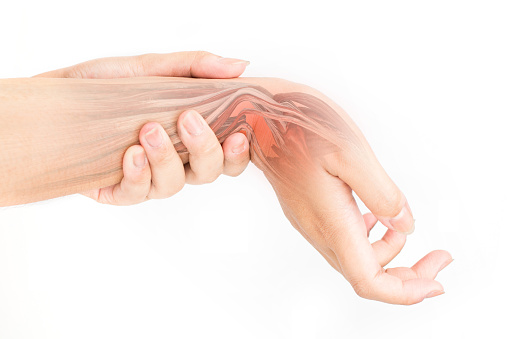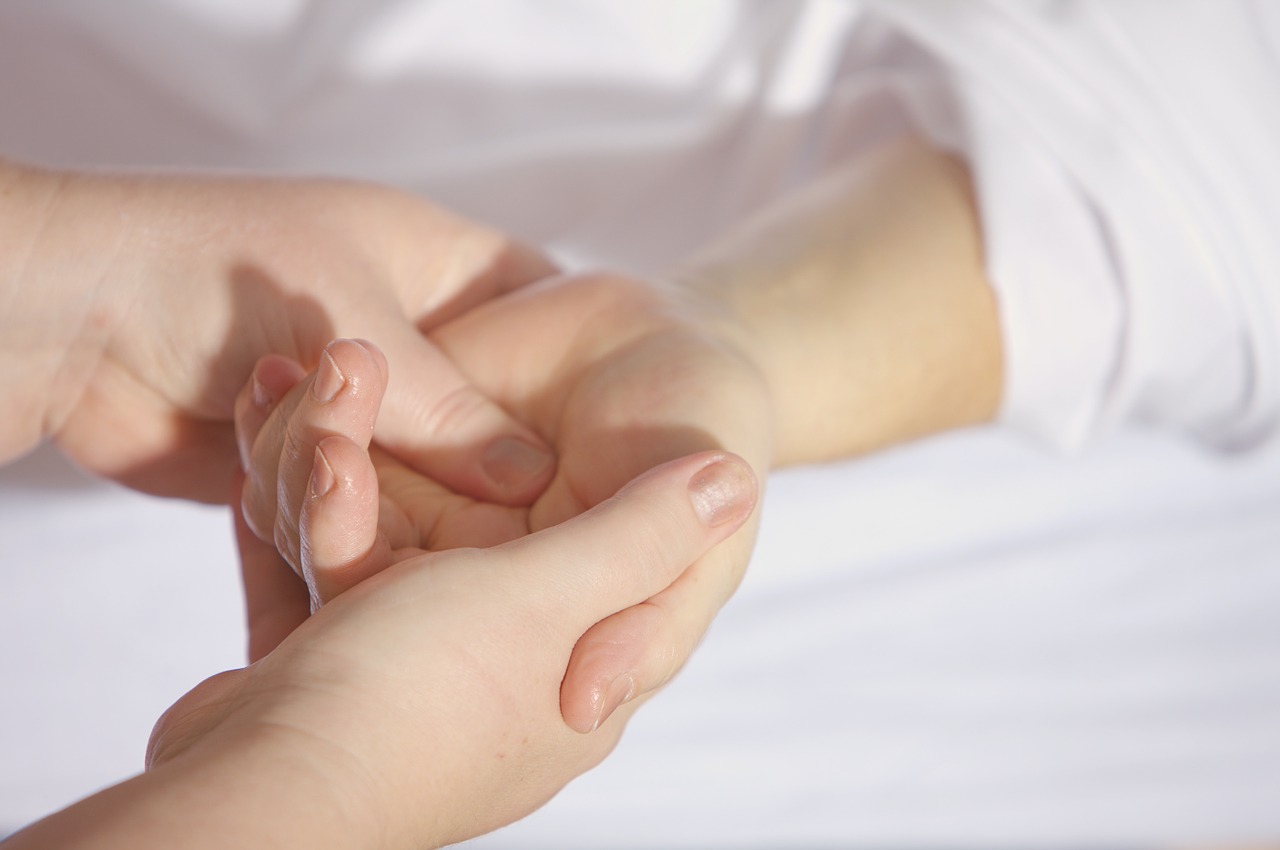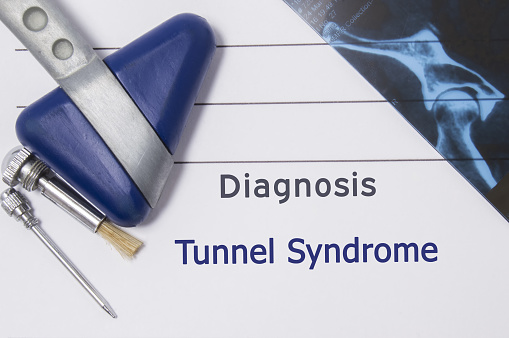- plasticcenter.sk - Hand surgery
- eveclinic.sk - Hand surgery
- neurologiepropraxi.cz - Carpal tunnel syndrome - pathogenesis, diagnosis and treatment
Carpal tunnel syndrome: what are the prevention, exercise and treatment options?

Carpal Tunnel Syndrome is a hand disease that affects mostly women. It is caused by oppression of the median nerve. It causes discomforts such as stiffness, tingling, numbness to severe seizure pain, occurring mostly at night. Prevention of this occupational disease is either a change of occupation or correct hand position and exercise. How to do it?
Article content
No matter where you work, every job comes with risks. Every job carries the risk of a different occupational disease. Some people strain their eyes, others their arms. Even a person who "sits on his ass" suffers from spinal problems.
The hand is an indispensable tool that is capable of performing many activities. Injury or illness causes not only pain but also functional limitations that have consequences.
One of the most well-known occupational diseases is carpal tunnel syndrome. It occurs in people who have a permanent or frequent bend in the wrist when working. A typical example is working with a computer.
Carpal tunnel syndrome

Carpal tunnel syndrome (syndroma canalis carpi) is also called tunnel syndrome or acroparesthesia nocturna (nocturnal acral carpal tunnel syndrome). It is a neuropathic disease of the hand. It is even the most common neuropathy in general.
It arises from narrowing of the carpal tunnel with subsequent compression of the median nerve. The narrowing of the carpal tunnel and the pressure on the median nerve occur acutely, but also chronically. The cause is more than just improper employment and constant strain on the hand or holding it in the wrong position.
Ultimately, it leads to severe ischaemic pain (pain from lack of blood supply) caused by hypoxia (lack of oxygen) of the nerve tissues passing through the carpal tunnel.
Causes of carpal tunnel syndrome
| Occupations at risk |
|
| Chronic diseases |
|
| Fractures and injuries |
|
What is carpal tunnel and median nerve?
Theanatomical structure of the hand is a complex of tiny bones, joints, muscles, ligaments, nerves and blood vessels.
The joints and ligaments of the hand begin at the point where the forearm ends. This point is called the radiocarpal joint (articulatio radiocarpalis). It is the articulation of the end of the forearm with the bones of the wrist.
Between the two rows of wrist bones is the mediocarpal joint (articulatio mediocarpalis).
The carpal bones are connected by a strong ligament, which forms a furrow. Another passageway of the hand encircles the bony canal of the wrist (canalis carpi), also called the carpal tunnel.
This is a free space through the centre of which pass the tendons of the muscles, the neurovascular bundle and the continuation of the median nerve. This originates from the forearm and provides sensation and movement of the fingers of the hand.
It is followed by the carpometacarpal joints (articulationes carpometacarpales), the metacarpal bones (ossa metacarpi), the metacarpophalangeal joints (articulationes metacarpophalangeae), the interphalangeal joints (articulationes interphalangeae manus) and the individual wrist bones of the fingers.

How does carpal tunnel syndrome manifest itself?
Symptoms begin subtly. Initially, there is tingling (paresthesia) of the fingers of the hand, specifically fingers I, II and III on the thumb side.
These three fingers are innervated by the median nerve. When the nerve is pinched, there is insufficient blood supply and oxygenation to the nerve fibres, which results in paresthesias and sensory disturbances.
The tingling of the hands occurs mainly at night and often wakes the patient from sleep. It is often at night that increased pressure in the carpal tunnel occurs.
This distress is accompanied by increasing pain in the same area as the paresthesias. The pain increases at night for the same reason and is also caused by the horizontal position of the hand. It often radiates towards the forearm, sometimes up to the shoulder (median pathway).
Paresthesia, numbness and pain combine to cause a motor disorder of the hand, which is manifested by a kind of clumsiness of the hand, difficulty in grasping objects, frequent falling of objects from the hand, and weakening of the flexion and opposition of the thumb (thumb mobility disorder).
Less frequently, and especially when the pain is severe, local swelling may occur. However, these symptoms tend to be isolated and may not occur in every individual.
Typical symptoms of carpal tunnel syndrome:
- tingling of the first, second and third fingers of the hand.
- reduced sensitivity of the hand
- wrist pain radiating to the forearm or shoulder
- local swelling
- impaired mobility on the thumb side
- impaired thumb flexion and opposition
- difficulty grasping objects
- frequent dropping of objects from the hands
Prevention - your hands deserve attention

Prevention should be especially important for people whose jobs put them at risk of developing carpal tunnel syndrome.
Those who suffer from conditions that increase the risk of carpal tunnel syndrome should also be vigilant.
Prevention is not only possible in the acute onset of the disease, for example after an accident and poorly healed fractures that create a mechanical barrier.
Give your hands a rest
The important thing in preventing the onset of the disease is not to overload the hands. In some cases, however, this is not easy. Often this is forgotten in the rush of extra work.
In your free time, it is a good idea to exercise tired wrists with a series of circular movements. This can be done whenever you feel pressure, stiffness or tension in your hands. After moving the small joints, it is best to let your hands rest and not engage in other activities that would require you to use them again.
Everyone is busy, but short breaks between activities can always be taken. It is best and correct to take a break before pain forces you to do so.
A regular morning warm-up to get your joints moving
A morning warm-up is the best start to the day. It gets the blood flowing, stiff joints moving and wakes you up better than a cup of coffee. In today's hectic world, we often forget this and only include a healthy lifestyle in our daily routine when we feel some health problems.
Setting the alarm a little earlier has never killed anyone. A few good exercises, especially for people at risk, prevent the onset of specific diseases. With carpal tunnel syndrome, you don't even have to get out of bed.
Necessary precautions for hazardous occupations
Some occupations do not change and the hand is regularly strained. However, there are a number of work aids and also orthopaedic devices that can be used and which aim to minimise the pressure on the median nerve.
When working on a computer or in an office over a pile of papers, we should not forget to use a suitable, medical chair, correct chair height, desk height, general body position, and correct elbow and wrist position.
The elevated position of the keyboard is totally inappropriate, as it causes an extensor position of the hands. An ergonomic keyboard should be used. The hands should be in a horizontal position parallel to the forearms.
Which exercises are suitable for the prevention and treatment of carpal tunnel syndrome

The principle of exercise in the prevention of carpal tunnel syndrome is to move the stressed area and provide sufficient blood supply. Blood supply prevents hypoxia and subsequent damage to the median nerve.
A simple exercise by gently moving the body:
Stand on all four limbs, with your feet hip-width apart. Place your hands on the mat, palms down, shoulder-width apart. Keep your spine straight and firm. Gently move your entire body back and forth, circling your wrists and palms.
Exercises that can be done while working
- An exercise, or rather a massage, that can easily be done at work between short breaks, consists of applying pressure with the opposite thumb to the wrist area on the upper, inner part. The thumb goes from the starting point distally to the fingers. This simple exercise will blood the area. Massaging the wrist is also suitable.
- Exercising the front and back of the flexors (benders) and extensors can also be done anywhere. A wall in an office or any other support point will work well as an exercise tool. Point the extended upper limbs in the direction of the support point. Place the palms and then alternate the full length of the front of the hands against the wall and apply slight pressure.
- If you are working outdoors and do not have a wall to lean against, the extensors can be practiced independently by bending the elbows with the forearms pointing upward to face level. The palms of both hands touch across the entire surface (hands as in prayer). Alternate pressing the palms against each other and releasing.
- A soft ball that is grasped, repeatedly squeezed with the palm of the hand and released is also a simple aid for training and blood circulation in the palms. A flexible triangle with holes for five fingers can also be purchased at a medical supply store, with the top of the triangle ending in a hemisphere pointing towards the wrist. The principle of the exercise is the same as for the ball.
- The office table can be used in various ways. Place your forearms on the table with palms facing upwards. Repeatedly clench your hands into fists and relax. The exercise is good for blood circulation in the wrist area.
- Before removing your hands from the table, move the palm of the opposite hand with even pressure from the inside of the elbow socket to the wrist area and alternate hands.
Diagnosis and treatment

Diagnosis of the disease is not difficult, and treatment of symptoms is effective, but may not be in the higher stages.
Surgical intervention may be necessary.
Treatment should not forget to treat the underlying disease, which may also be a trigger for carpal tunnel syndrome.
Diagnostic minimum
The final diagnosis should be made by a neurologist on the basis of anamnestic data, typical symptoms and factors triggering the deterioration. The patient should also undergo a physical examination, ultrasound examination and EMG examination.
On physical examination, the physician will detect the inability to fully squeeze the palm and the occurrence of paresthesias after provocation maneuvers. Usually, the wrist is brought into a flexed position after flexing the arm at the elbow.
The most certain is the so-called Tinel's sign. The doctor taps the volar, carpal ligament with a hammer and the patient develops paresthesias and tenderness of the first three fingers on the thumb side.
An ultrasound or X-ray confirms or rules out carpal tunnel narrowing. An EMG scan can objectively reveal a median nerve conduction defect.
Home recipes and treatments to relieve pain
Plaster compresses applied topically to the painful wrist not only relieve pain but also reduce swelling. The hand should be at rest and immobile during cold treatment, which relieves pressure and tension.
Movement in the affected limb should be minimised. This can be achieved by using orthopaedic wrist aids, but also by a simple elastic bandage to strengthen the hand. The bandage prevents movement but reduces swelling.
Pharmacological treatment of symptoms and pain
Corticosteroids are the first choice for treating the symptoms of tunnel syndrome that has already developed. They are most effectively administered locally in injection form. Kenalog or Diprophos are most commonly used. Just one injection of corticosteroids relieves pain. It is rare for them not to be effective.
Various types of analgesics are also available. But analgesics are not very effective because of the oppression compounded by swelling. As long as the pressure persists, so do the symptoms.
When is surgery the only option? Is it necessary to worry?
Surgery is necessary if the tunnel has narrowed to such an extent that the symptoms are no longer acceptable to the patient, limit daily activities and do not respond to previous treatment. Also if the narrowing is too extensive according to X-ray and ultrasound examination or if necrosis develops.
Surgery for carpal tunnel syndrome is not complicated at all. The aim of the operation is to decompress the pressure created by stretching the carpal ligament. This simple procedure brings immediate relief to patients. Complications can arise if the condition is neglected with the formation of necrosis.
Cviky - autoterapia syndrómu karpálneho tunela
Interesting resources










